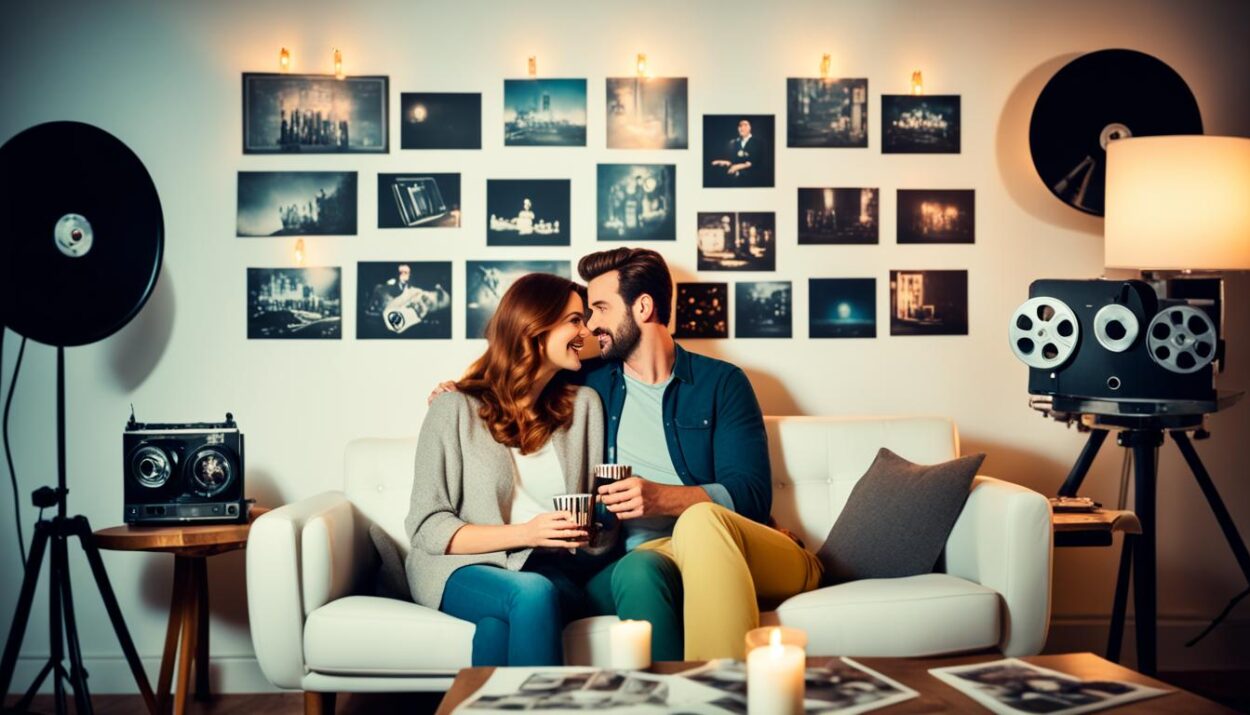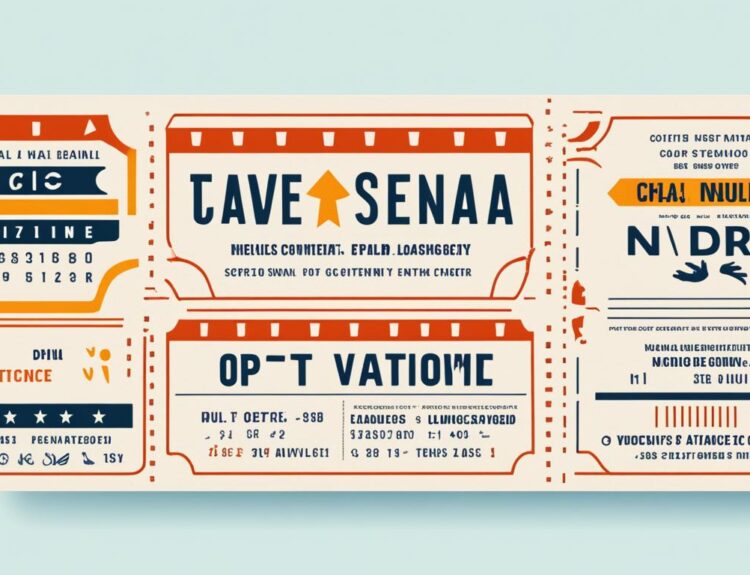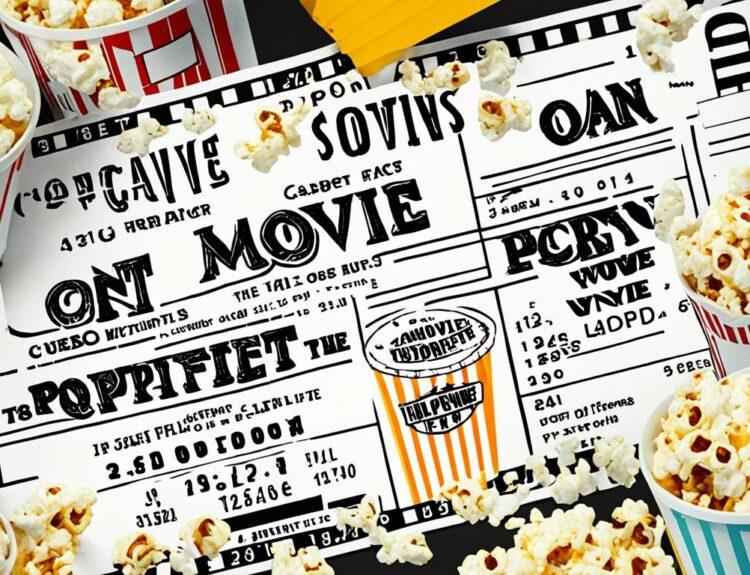Step back in time to the golden age of Hollywood, an era spanning from 1927 to the early 1960s, when romantic movie classics captured the hearts of audiences worldwide. From the silent era’s timeless romance in films like “Broken Blossoms” to the sweeping love stories of old Hollywood, these classic films have left an indelible mark on cinema history.
The romance genre has endured the test of time, with modern masterpieces like Damien Chazelle’s “La La Land” and Wong Kar-wai’s “In the Mood for Love” paying homage to the romantic dramas and romantic comedies of yesteryear. Who can forget the iconic romantic quotes, heartwarming romantic scenes, and unforgettable romantic soundtracks that have become synonymous with these beloved films?
From the bittersweet romance of “An Affair to Remember” to the wartime passions of “Casablanca”, the best romantic movie classics of Hollywood’s Golden Age continue to captivate audiences with their timeless tales of love and longing. Join us on a journey through the most iconic love stories ever told on the silver screen.
Key Takeaways
- Hollywood’s golden age, from 1927 to the early 1960s, produced countless romantic movie classics
- Silent era films like “Broken Blossoms” showcased timeless romance
- Modern masterpieces like “La La Land” pay homage to classic romantic dramas and comedies
- Iconic romantic quotes, scenes, and soundtracks have become synonymous with these beloved films
- From “An Affair to Remember” to “Casablanca”, the best romantic movie classics continue to captivate audiences
The Golden Age of Hollywood Romance
The Golden Age of Hollywood, spanning from the 1910s to the 1960s, produced some of the most iconic and enduring romantic films in cinematic history. This era, particularly between 1927 and the early 1960s, is often referred to as the “Golden Age of Hollywood Romance” due to the proliferation of timeless love stories that continue to captivate audiences to this day.
Silent Era Love Stories
Even before the rise of talkies, the silent era saw the creation of powerful romantic dramas that managed to convey deep emotions through visual storytelling. Films like D.W. Griffith’s Broken Blossoms (1919) and F.W. Murnau’s Sunrise (1927) showcased the potential of the romance genre, laying the foundation for the golden age of Hollywood that followed.
The Rise of Talking Pictures and Iconic Couples
With the advent of sound in the late 1920s, the golden age of Hollywood romance truly began to flourish. Talking pictures allowed for more nuanced performances and the development of iconic movie couples whose chemistry and charisma set the screen ablaze. Some of the most memorable romantic pairings from this era include:
- Humphrey Bogart and Ingrid Bergman in Casablanca (1942)
- Cary Grant and Deborah Kerr in An Affair to Remember (1957)
- Clark Gable and Vivien Leigh in Gone with the Wind (1939)
- Spencer Tracy and Katharine Hepburn in Adam’s Rib (1949)
These iconic couples, along with many others, helped define the romance genre during the golden age of Hollywood, setting a high standard for on-screen chemistry and emotional depth that continues to inspire filmmakers and audiences alike.
| Notable Directors | Iconic Actors | Classic Romance Films |
|---|---|---|
| Billy Wilder | Cary Grant | Casablanca (1942) |
| Alfred Hitchcock | Audrey Hepburn | An Affair to Remember (1957) |
| George Cukor | Humphrey Bogart | Breakfast at Tiffany’s (1961) |
| Leo McCarey | Ingrid Bergman | City Lights (1931) |
The golden age of Hollywood romance produced a wealth of classic films that have stood the test of time, thanks in large part to the visionary directors and talented actors who brought these stories to life. From the charming comedy of Breakfast at Tiffany’s to the heartwarming drama of City Lights, these films showcase the range and depth of the romance genre during its heyday in Hollywood.
Timeless Tales of Love and Longing
Classic romance movies have captivated audiences for generations with their timeless tales of love and longing. From the heartbreaking story of star-crossed lovers to the triumphant narratives of couples overcoming seemingly insurmountable obstacles, these films have left an indelible mark on the hearts of moviegoers. Let’s explore some of the most enduring themes in classic romance cinema.
Star-Crossed Lovers on the Silver Screen
Many classic romance movies revolve around the concept of star-crossed lovers, whose love is destined to face challenges and heartbreak. Films like “Brief Encounter” (1945) and “Waterloo Bridge” (1940) depict the bittersweet romances of couples who meet by chance, only to find their love affair doomed by circumstance. These stories of ill-fated love have a timeless appeal, resonating with audiences who understand the pain of loving someone against all odds.
Overcoming Obstacles in the Name of Love
Another common theme in classic romance movies is the idea of couples overcoming seemingly insurmountable obstacles to be together. In films like “Sabrina” (1954), the love triangle between Humphrey Bogart, Audrey Hepburn, and William Holden’s characters showcases the lengths people will go to follow their hearts. Similarly, movies like “An Affair to Remember” (1957) and “Now, Voyager” (1942) depict couples who must overcome personal and societal barriers to find happiness together.
| Decade | Most Captivating Romantic Movies |
|---|---|
| 1930s | “Gone with the Wind” (1939), “Wuthering Heights” (1939) |
| 1940s | “Casablanca” (1942), “Brief Encounter” (1945) |
| 1950s | “Sabrina” (1954), “An Affair to Remember” (1957) |
| 1960s | “Breakfast at Tiffany’s” (1961), “Doctor Zhivago” (1965) |
| 1970s | “Love Story” (1970), “The Way We Were” (1973) |
| 1980s | “An Officer and a Gentleman” (1982), “Dirty Dancing” (1987) |
| 1990s | “Ghost” (1990), “Pretty Woman” (1990), “Legends of the Fall” (1994) |
Forbidden Romances That Captured Hearts
Forbidden romance is another enduring theme in classic romance movies. Films like “Notorious” (1946), where Ingrid Bergman and Cary Grant’s characters find themselves on opposite sides of a post-WWII espionage plot, showcase the allure of a love that defies societal norms and expectations. Other movies, like “A Place in the Sun” (1951) and “Splendor in the Grass” (1961), explore the heartbreaking consequences of forbidden love in the face of class differences and societal pressures.
These timeless tales of love and longing continue to resonate with audiences, reminding us of the enduring power of romance in the face of adversity. Whether it’s the epic love stories of star-crossed lovers, the triumphant narratives of couples overcoming obstacles, or the bittersweet tales of forbidden romance, classic romance movies have left an indelible mark on cinematic history and the hearts of moviegoers around the world.
Unforgettable Performances in Classic Romantic Films
Many classic romance movies are remembered for the iconic performances delivered by legendary movie stars. These romantic leads brought their characters to life with charm, passion, and undeniable chemistry on screen, creating acting duos that have become synonymous with cinematic love stories.
One such iconic pairing is Audrey Hepburn and Gregory Peck in the 1953 film “Roman Holiday.” Their charming portrayal of a princess and a reporter falling in love while exploring Rome captured audiences’ hearts and earned Hepburn an Academy Award for Best Actress.
Another unforgettable duo is Cary Grant and Deborah Kerr in the 1957 classic “An Affair to Remember.” Their emotionally charged roles as lovers who meet on a transatlantic cruise and plan to reunite atop the Empire State Building have become a quintessential romantic movie moment.
“We’ll take the same love affair, only slightly different. Instead of finishing in June, we’ll finish in July. We’ll go to the same places, say the same things, and you’ll be wearing a necklace.” – Cary Grant as Nickie Ferrante in “An Affair to Remember”
Humphrey Bogart and Ingrid Bergman’s performances in the 1942 film “Casablanca” are perhaps the most iconic in classic movie romance. Their portrayal of Rick Blaine and Ilsa Lund, former lovers torn apart by war and reunited in a Moroccan nightclub, has become a timeless symbol of love and sacrifice.
| Movie | Iconic Romantic Leads | Year |
|---|---|---|
| Gone with the Wind | Clark Gable and Vivien Leigh | 1939 |
| Notorious | Cary Grant and Ingrid Bergman | 1946 |
| Breakfast at Tiffany’s | Audrey Hepburn and George Peppard | 1961 |
| The Philadelphia Story | Cary Grant and Katharine Hepburn | 1940 |
Other notable performances include Clark Gable and Vivien Leigh’s portrayal of Rhett Butler and Scarlett O’Hara in “Gone with the Wind,” and the witty banter between Cary Grant and Katharine Hepburn in “The Philadelphia Story.” These unforgettable acting duos and their sizzling on-screen chemistry have made these films enduring classics of the romance genre.
Swoon-Worthy Soundtracks and Memorable Melodies
From the heartwarming notes of “Moon River” in Breakfast at Tiffany’s to the haunting melody of “Unchained Melody” in Ghost, romantic movie soundtracks have the power to transport us into the world of the film, evoking emotions and enhancing the on-screen chemistry between the leads. The perfect background music can elevate a romantic scene, making it an unforgettable moment in cinematic history.
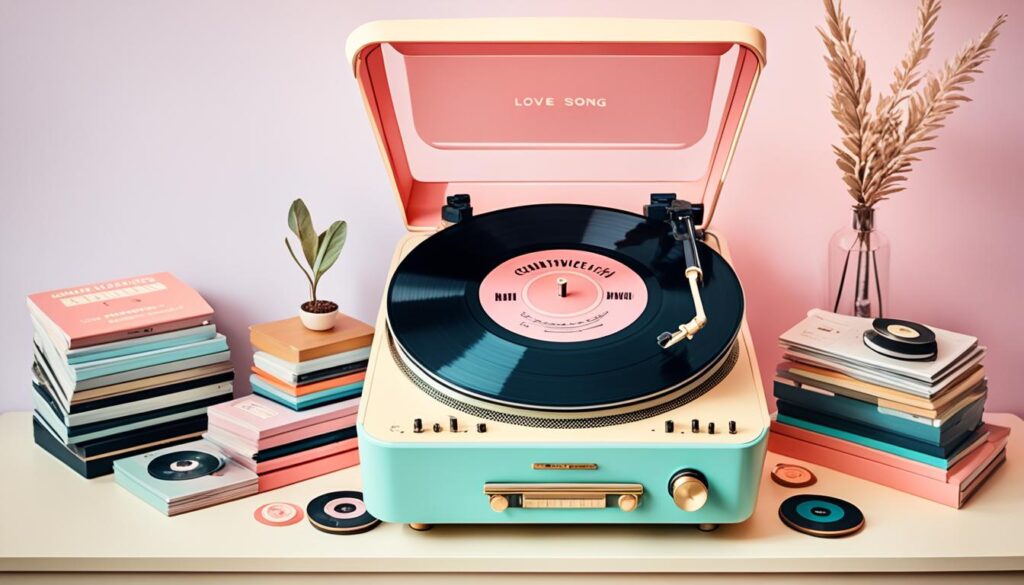
The Power of Music in Enhancing Romantic Scenes
Music has the ability to heighten the emotional impact of a scene, and this is particularly true in romantic movies. A well-crafted musical score can convey the unspoken feelings between characters, creating an atmosphere of longing, passion, or heartbreak. Composers like Dario Marianelli, who cited Beethoven’s early piano sonata as inspiration for scoring a particular movie, understand the influence of classical music on period dramas and use it to their advantage.
Other notable examples include Rachel Portman’s work on Emma (1996) and The Duchess (2010), where piano and strings are highlighted in the musical scores, and Kris Bowers’ innovative approach to the Bridgerton soundtrack, which combines classical music with string quartet covers of pop songs. These talented composers demonstrate the power of music in enhancing the romantic elements of a film.
Iconic Love Songs from Classic Movies
Many classic romantic movies have produced iconic love songs that have stood the test of time. These theme songs often become synonymous with the film itself, evoking memories of the characters and their love stories. Some notable examples include:
- “As Time Goes By” from Casablanca (1942)
- “Moon River” from Breakfast at Tiffany’s (1961)
- “Unchained Melody” from Ghost (1990)
- “My Heart Will Go On” from Titanic (1997)
- “A Thousand Years” from Twilight: Breaking Dawn – Part 1 (2011)
These songs have become a part of popular culture, transcending the movies they originated from and becoming beloved classics in their own right. They continue to be played at weddings, anniversaries, and other romantic occasions, a testament to the enduring power of a well-crafted love song.
| Movie | Composer | Notable Aspects |
|---|---|---|
| Atonement (2007) | Dario Marianelli | Influenced by Beethoven’s early piano sonata |
| Emma (1996) and The Duchess (2010) | Rachel Portman | Emphasis on piano and strings in the musical scores |
| Bridgerton (2020) | Kris Bowers | Combines classical music with string quartet covers of pop songs |
| The Piano (1993) | Michael Nyman | Tailored the score to accommodate lead actress Holly Hunter’s piano-playing abilities |
These examples showcase the creativity and versatility of composers in the realm of romantic movie soundtracks, as they find unique ways to enhance the emotional depth of the films they work on. From classical influences to contemporary twists, the power of music in romantic movies continues to captivate audiences and leave a lasting impact on the genre.
Exploring the Subgenres of Romantic Movie Classics
Romantic movie classics come in a variety of subgenres, each with its own unique charm and appeal. From the witty banter of screwball comedies to the sweeping grandeur of historical romances, these films have captivated audiences for generations. Let’s take a closer look at some of the most beloved subgenres of romantic movie classics.
Romantic Comedies That Stand the Test of Time
Romantic comedies, or rom-coms, are a staple of the romantic movie genre. These films combine lighthearted humor with heartfelt romance, creating a delightful viewing experience. Classic examples include the 1940 film The Philadelphia Story, starring Cary Grant, Katharine Hepburn, and James Stewart, and the 1938 screwball comedy Bringing Up Baby, featuring Grant and Hepburn in a hilarious tale of mistaken identities and a pet leopard.
Epic Historical Romances and Period Pieces
Historical romances and period dramas transport viewers to another time and place, exploring love stories against the backdrop of significant events or eras. Entertainment Weekly’s list of the best romantic period movies includes the 1939 epic Gone with the Wind, set during the American Civil War, and the 1939 adaptation of Emily Brontë’s novel Wuthering Heights, a haunting tale of obsessive love in 19th-century England.
Tearjerkers and Emotional Rollercoasters
Some romantic movie classics are known for their ability to evoke strong emotions, particularly through poignant depictions of love and loss. These tearjerkers and melodramas often explore the challenges and sacrifices that come with deep, abiding love. Notable examples include the 1940 film Waterloo Bridge, about a ballerina and a soldier’s ill-fated romance during World War I, and the 1942 movie Now, Voyager, starring Bette Davis as a woman who undergoes a dramatic transformation and finds love.
| Subgenre | Notable Films |
|---|---|
| Romantic Comedy | The Philadelphia Story (1940), Bringing Up Baby (1938) |
| Historical Romance | Gone with the Wind (1939), Wuthering Heights (1939) |
| Tearjerkers and Melodramas | Waterloo Bridge (1940), Now, Voyager (1942) |
Whether you prefer the laughter and wit of a romantic comedy, the sweeping passion of a period drama, or the emotional depth of a melodrama, romantic movie classics offer something for every taste. These timeless films continue to captivate audiences with their unforgettable love stories and enduring charm.
Behind the Scenes: The Making of Romantic Movie Masterpieces
The golden age of Hollywood produced some of the most beloved romantic movies of all time, and behind each masterpiece was a team of talented individuals working tirelessly to bring these stories to life. From the visionary directors who crafted each scene to the scriptwriters who adapted beloved love stories for the screen, the making of these classic films is a fascinating look at the art of filmmaking.
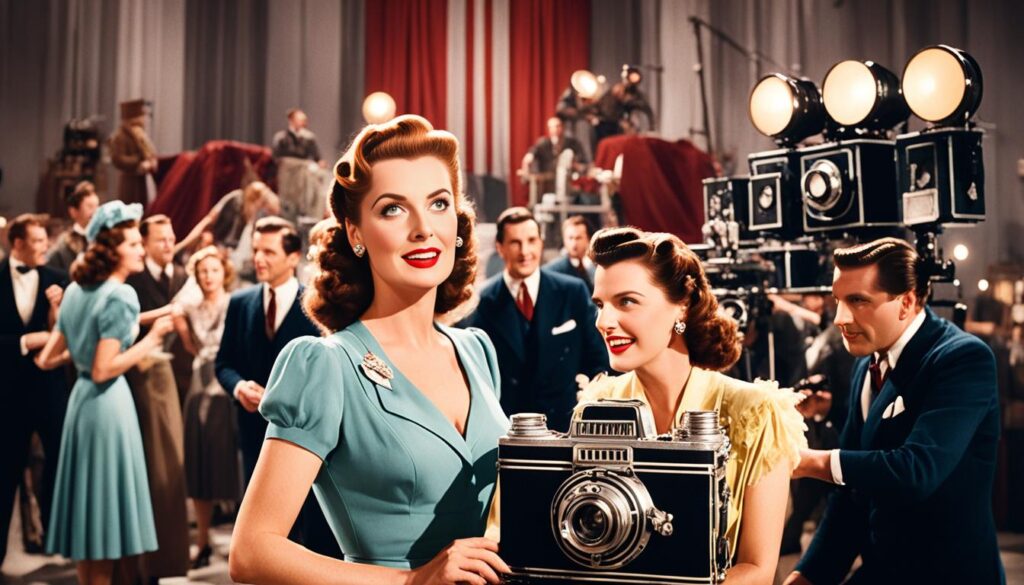
Visionary Directors and Their Contributions to the Genre
Many of the most iconic romantic movies were helmed by directors who left an indelible mark on the genre. George Cukor, known for his skilled direction of actresses, brought his touch to classics like “The Philadelphia Story” and “My Fair Lady.” Alfred Hitchcock, the master of suspense, showcased his versatility with the romantic thriller “Notorious,” which featured Cary Grant and Ingrid Bergman in a tale of love and espionage. Billy Wilder’s satirical take on romance in “The Apartment” added depth and humor to the genre, earning the film multiple Academy Awards.
| Director | Notable Romantic Films | Year Released |
|---|---|---|
| Orson Welles | Citizen Kane | 1941 |
| Howard Hawks | His Girl Friday | 1940 |
| John Huston | The Maltese Falcon | 1941 |
| Billy Wilder | Double Indemnity | 1944 |
| Alfred Hitchcock | Psycho | 1960 |
| David Lean | Lawrence of Arabia | 1962 |
| Stanley Kubrick | 2001: A Space Odyssey | 1966 |
Scriptwriting and Adapting Beloved Love Stories
While directors brought the vision, it was the scriptwriters who crafted the words that would become some of the most memorable lines in cinematic history. Many classic romantic movies were adaptations of existing works, requiring skilled writers to translate the essence of these stories onto the screen. Ben Hecht and Charles MacArthur’s adaptation of “Wuthering Heights” captured the brooding intensity of Emily Brontë’s novel, while Frances Goodrich and Albert Hackett’s screenplay for “The Thin Man” series brought the witty banter and charm of Dashiell Hammett’s detective novel to life.
“You know how to whistle, don’t you, Steve? You just put your lips together and blow.” – Lauren Bacall in “To Have and Have Not,” screenplay by Jules Furthman and William Faulkner
From the heartfelt confessions to the clever quips, the words spoken in these films have become an integral part of their legacy. The scriptwriters behind the scenes played a crucial role in shaping the stories that continue to captivate audiences decades later, cementing the place of these romantic movie masterpieces in cinematic history.
The Legacy of romantic movie classics
Romantic movie classics have left an indelible mark on cinema culture, captivating audiences for generations with their timeless tales of love and longing. These films, from the sweeping epics like “Gone with the Wind” to the intimate character studies like “Casablanca,” continue to inspire filmmakers and viewers alike, cementing their enduring popularity and influence on the romantic genre.
The legacy of these classic love stories is evident in their lasting impact on popular culture. Films like “Titanic” (1997), which remains one of the highest-grossing movies of all time with over $2.2 million in global box office earnings, and “Doctor Zhivago” (1965), which garnered 10 Academy Award nominations and won five, showcase the enduring appeal of well-crafted romantic narratives.
From the 1970s classic “The Way We Were” to the acclaimed foreign film “Like Water for Chocolate” (1992), romantic movie classics span decades and cultures, resonating with audiences worldwide. The continued popularity of films like “Sleepless in Seattle” (1993) and “The Princess Bride” (1987) on streaming platforms and home media further demonstrates the timeless nature of these beloved stories.
| Film | Year | Accolades |
|---|---|---|
| “It’s a Wonderful Life” | 1946 | Nominated for 5 Academy Awards |
| “An American in Paris” | 1951 | Won 6 Oscars, including Best Picture |
| “Moonstruck” | 1987 | Cher won Best Lead Actress Oscar |
| “The Best Man” | 1999 | Won 3 NAACP awards, including Outstanding Motion Picture |
The influence of romantic movie classics extends beyond the genre itself, with films like “Rashomon” (1950) and its groundbreaking use of multiple perspectives inspiring generations of filmmakers. Even contemporary movies, such as the Coen Brothers’ “O Brother, Where Art Thou?” and Martin Scorsese’s “Goodfellas,” pay homage to classic storytelling techniques and tropes.
“The legacy of classic romance movies endures because they speak to the fundamental human experiences of love, longing, and connection. These films have set a high bar for the genre and continue to be celebrated as some of the greatest cinematic achievements of all time.”
As new generations discover the magic of these classic love stories, the legacy of romantic movie classics continues to grow, ensuring that their impact on cinema culture will endure for years to come.
Modern Takes on Classic Love Stories
The influence of classic romance movies continues to resonate in contemporary cinema, with many modern films paying homage to the beloved tropes and themes of the genre. These modern romance movies often introduce classic love stories to new audiences, showcasing the timeless appeal of romance on the big screen.
Contemporary Remakes and Retellings
Contemporary remakes and adaptations, such as the 2005 version of “Pride and Prejudice” and the 1998 film “Ever After,” offer fresh perspectives on classic tales of love. These retellings often infuse the original stories with modern sensibilities and updated settings, making them more relatable to today’s viewers. Other notable examples include Baz Luhrmann’s 1996 “Romeo + Juliet,” which brings Shakespeare’s tragic romance to a new generation with its bold visuals and strong performances, and the 2018 film adaptation of “Crazy Rich Asians,” which garnered extensive praise for its portrayal of love and cultural identity.
The Influence of Classic Romance on Today’s Films
The impact of classic romance movies extends beyond direct remakes and adaptations. Many modern films draw inspiration from the wit, charm, and emotional depth of their predecessors, incorporating classic movie influences and romantic movie tropes into their storytelling. Romantic comedies like “500 Days of Summer” (2009) and “Crazy, Stupid, Love” (2011) showcase the enduring appeal of the genre, while films like “La La Land” (2016) and “The Artist” (2011) pay homage to the golden age of Hollywood romance through their visual style and nostalgic tone. Even in non-traditional love stories, such as “Brokeback Mountain” (2005) and “The Shape of Water” (2017), the influence of classic romance can be felt in the way they explore the complexities of love and the human experience.
FAQ
What are some of the most iconic romantic movie classics from Hollywood’s Golden Age?
What are some notable romantic movies from the silent era?
What are some famous on-screen couples from classic romance movies?
What are some common themes in classic romance films?
What role does music play in classic romance movies?
What are some popular subgenres of romantic movie classics?
How have classic romance movies influenced contemporary cinema?
Source Links
- https://www.esquire.com/entertainment/movies/g26027881/best-romantic-movies-of-all-time/
- https://collider.com/best-classic-romance-movies/
- https://hannahfielding.net/golden-age-hollywood/
- https://nofilmschool.com/best-romance-movies
- https://medium.com/booksandmovies/best-romance-movies-by-decade-eccc2e1be346
- https://ew.com/movies/best-romantic-period-movies-all-time/
- https://www.abc.net.au/listen/classic/read-and-watch/music-reads/12-period-dramas-to-indulge-your-inner-romantic/13891038
- https://medium.com/@daniellmyersyd08/behind-the-scenes-10-fascinating-facts-about-classic-movie-masterpieces-2285ffe62c35
- https://www.esquire.com/entertainment/movies/g45734497/classic-hollywood-directors-on-set/
- https://www.imdb.com/title/tt0305771/
- https://www.forbes.com/sites/entertainment/article/best-romantic-movies/
- https://enochseagleeye.org/2988/showcase/the-legacy-of-classic-films-why-old-movies-still-matter-today/
- https://www.runningpress.com/titles/esther-zuckerman/falling-in-love-at-the-movies/9780762484461/
- https://medium.com/@olha.gvzd/timeless-romance-classic-love-stories-movies-072c58f3e6d3
- https://litjoycrate.com/a/blog/romance-books-turned-movie
- https://movieweb.com/modern-romance-movies-that-will-become-classics/
